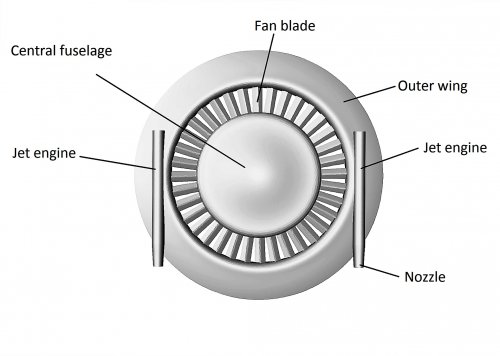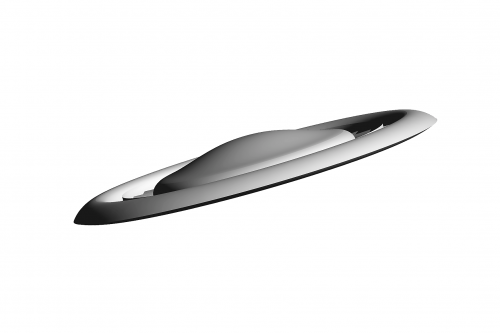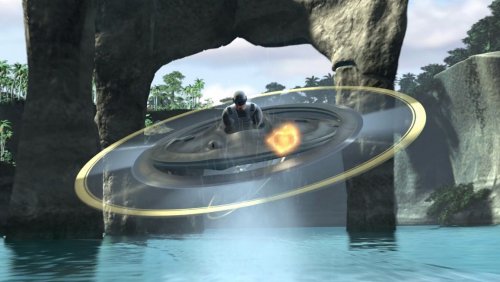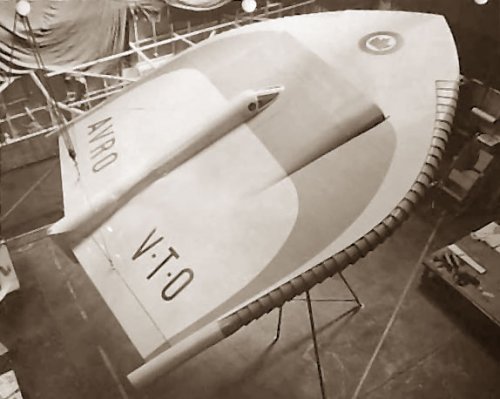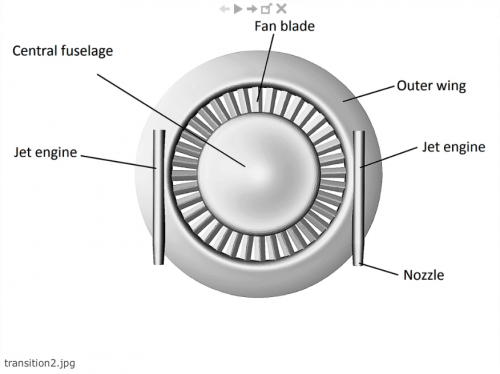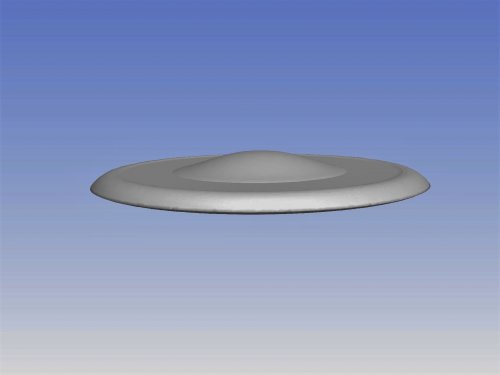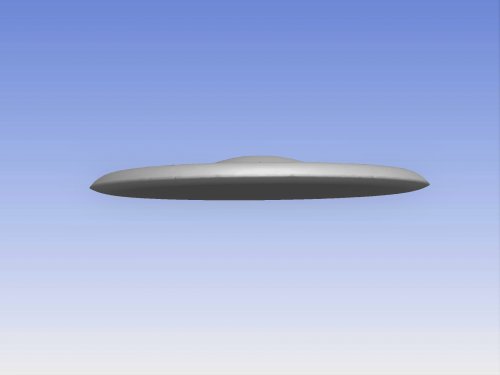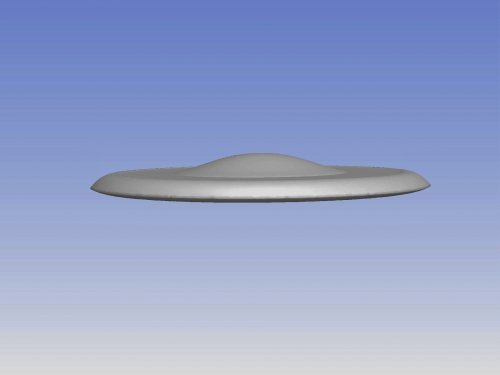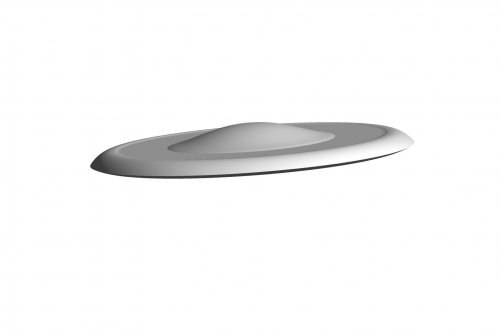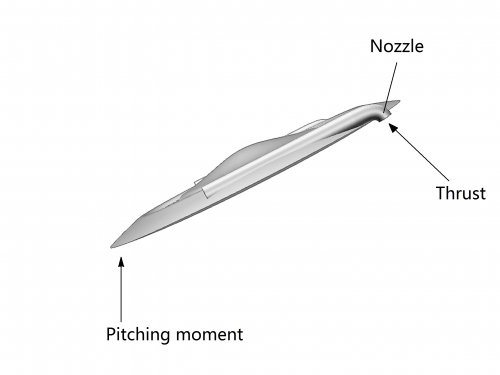^fwiw, this "leading edge" since it is a curved edge would have an edge diffraction scattering contribution (assuming a PEC/perfect electrical conductor) approximately on the order of "radius * wavelength / (2*pi)", as taken from approximation based on MEC/method of equivalent currents (ref: equation 14.12, "Radar Cross Section, 2nd Ed.", Knott)
the aircraft in the paper appears to have a radius on the order of 8 m, so at a nominal x-band wavelength of 0.03 m the edge diffraction contribution of the curved edge would be ~0.038 sqm, and as it is disc shaped this contribution would be present from any viewing angle on the plane of the disc...
added to this (ie. by phasor addition, where the maximum coherent sum would be the square of the sum of the square roots of each rcs contributor) would be the contribution of the curved surfaces which lead away from the edge in the upwards and downwards directions (ie. the surfaces which form the ogive cross section of the outer ring as it appears in the paper)... these backscatter contributions would be in the non-specular direction since the view angle (ie. in the plane of the disc) is not normal to the curved surfaces which would thus make them smaller than the specular backscatter from either a doubly curved surface (eg. spheroid) , or a singly curved surface (eq. cylinder)...
contributions by surface waves, ie. creeping and travelling, are not included as these are on the order of the square of the wavelength which would make them around -16 dB smaller (ie. at x-band of 0.03 m) than the contribution of the curved edge diffraction alone, so they're being ignored for approximation since their contribution is much smaller than that for the edge diffraction... I'ld guess if they were to actually build something like this they would use RAM to reduce the much larger edge diffraction contribution (ie. to attempt to get a -20 dB reduction or so via RAM), as well as to try and reduce surface wave contributions...

